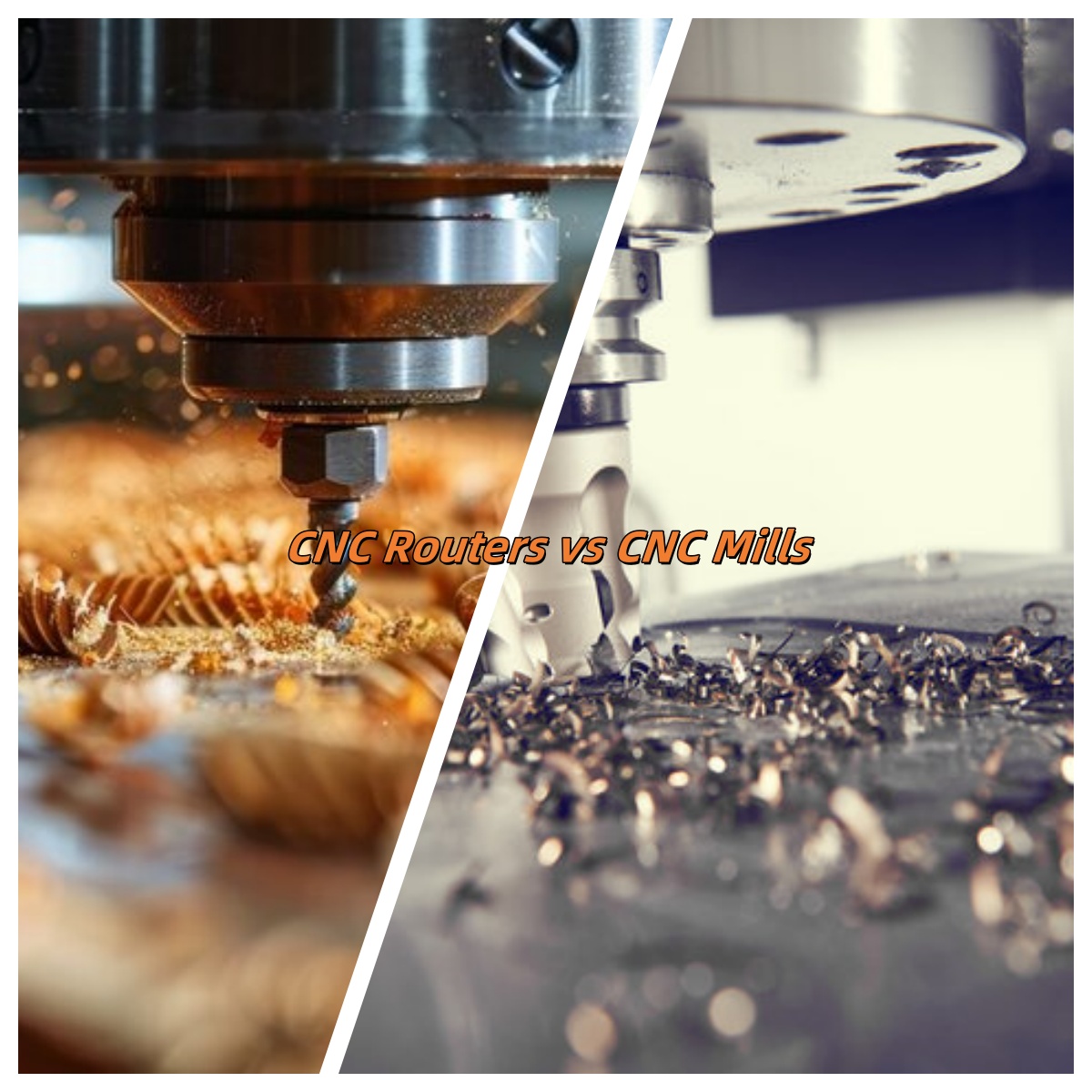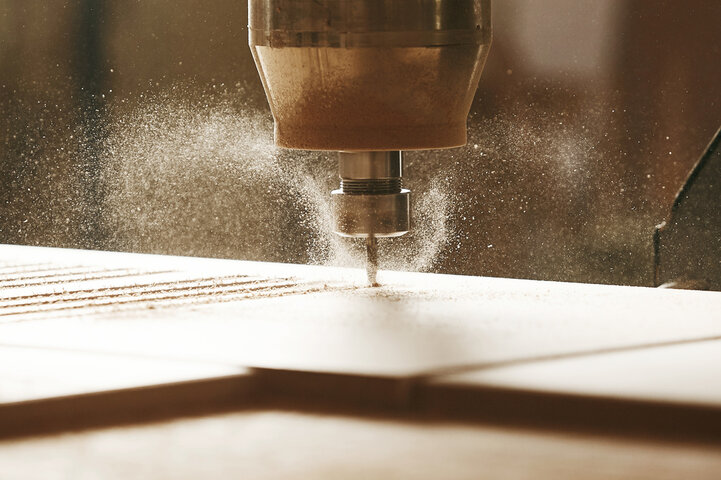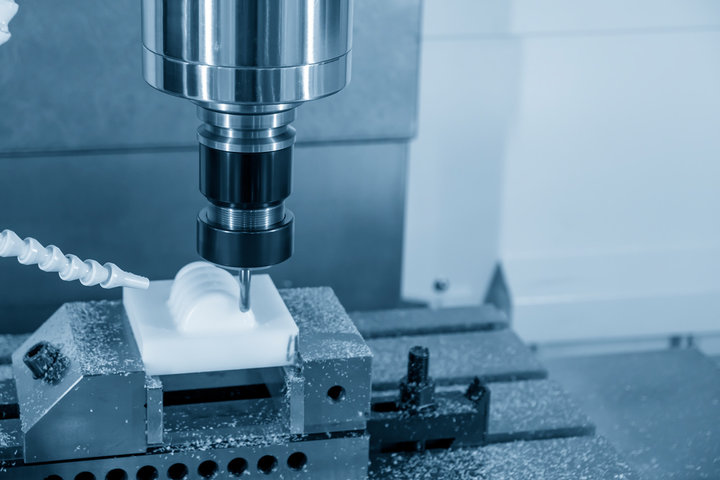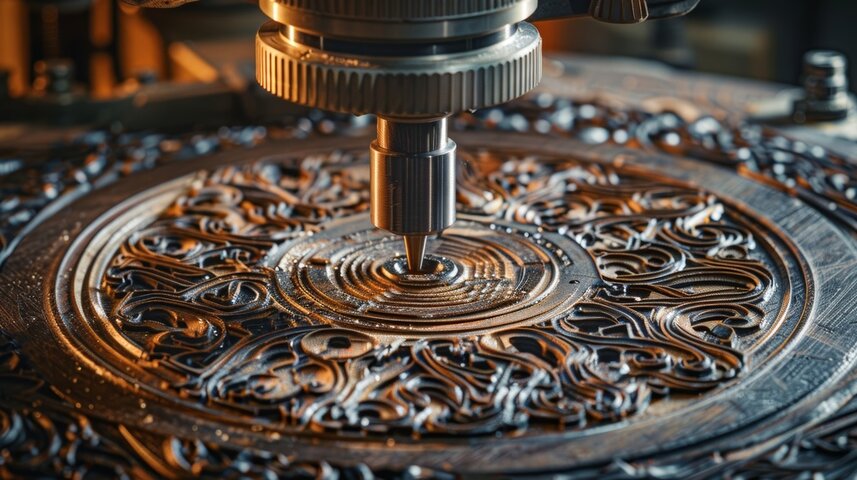Which CNC machine is best for your project? The choice between a CNC router and a CNC mill can impact your manufacturing outcomes. CNC technology plays a crucial role in modern industries, offering precision and efficiency. But what are the key differences between these machines?
In this post, we’ll break down the distinctions between CNC routers and CNC mills. You'll learn about their structures, applications, and best uses in various industries. By the end, you’ll know which CNC machine is ideal for your next project.

What is a CNC Router?
A CNC router is a computer-controlled machine used to carve, cut, or engrave materials into specific designs. It operates by moving a rotating tool along multiple axes to remove material, shaping the workpiece. Unlike traditional handheld routers, CNC routers are automated, providing higher precision and repeatability for complex tasks.
Key features and components of a CNC router include:
A robust frame and table to support the workpiece
A spindle that holds the cutting tool and moves along the X, Y, and Z axes
Stepper or servo motors to control the movement of the spindle
A computer system with CAD/CAM software to design and execute cutting operations
Vacuum or clamp systems to secure the material during machining
CNC routers are versatile machines that can work with a variety of softer materials, including:
Wood: MDF, plywood, hardwood, and softwood
Plastics: Acrylic, polycarbonate, PVC, and HDPE
Soft metals: Aluminum, brass, and copper
Foams and composites
Industries and applications that commonly utilize CNC routers are:
Woodworking and cabinetry
Sign-making and engraving
Rapid Prototyping and product development
Aerospace and automotive industries
Furniture and interior design

How CNC Routers Work
The CNC routing process begins with designing the part using CAD (Computer-Aided Design) software. The CAD file is then converted into a CAM (Computer-Aided Manufacturing) program, which generates the G-code containing the tool paths and cutting parameters.
The G-code is loaded into the CNC router's control software, which interprets the instructions and sends commands to the machine's motors. The spindle, equipped with the appropriate cutting tool, moves along the X, Y, and Z axes, following the programmed path to remove material from the workpiece.
CNC routers use various cutting tools and bits, depending on the material and desired cut. Some common types include:
Straight bits for general purpose cutting and profiling
V-bits for engraving and carving
Ball nose bits for 3D contours and sculpting
Compression bits for clean cuts on both sides of the material
The choice of software and programming method depends on the complexity of the project and the operator's preference. Popular CAD/CAM software for CNC routers includes:
Autodesk Fusion 360
VCarve Pro
Mastercam
Aspire
By combining advanced software, precise motion control, and versatile cutting tools, CNC routers offer a powerful solution for creating complex shapes and designs in a wide range of materials.
What is a CNC Mill?
A CNC mill, also known as a CNC machining center, is a computer-controlled machine tool that removes material from a workpiece using rotary cutting tools to create precise parts with complex geometries. It is capable of performing a wide range of machining operations, including drilling, boring, milling, and tapping.
Key features and components of a CNC mill include:
A sturdy base and column to provide rigidity and stability during machining
A spindle that holds and rotates the cutting tool at high speeds
Linear axes (X, Y, and Z) that move the workpiece or the spindle
A tool changer that allows automatic switching of cutting tools
A CNC control system that interprets G-code and controls the machine's movements
CNC mills are designed to handle a variety of materials, particularly harder substances such as:
Metals: Aluminum, steel, stainless steel, titanium, and brass
Plastics: Nylon, PEEK, POM, and polycarbonate
Composites: Carbon fiber, fiberglass, and Kevlar
Exotic materials: Inconel, Hastelloy, and ceramics
Industries and applications that rely on CNC mills for precision machining include:
Aerospace and defense: Aircraft components, missiles, and satellites
Automotive: Engine parts, transmission components, and suspension systems
Medical: Surgical instruments, implants, and prosthetics
Energy: Turbine blades, valve bodies, and pump components
Mold and die making: Injection molds, die casting dies, and forging dies

How CNC Mills Work
The CNC milling process starts with the creation of a 3D CAD model of the part. The CAD file is then processed by CAM software, which generates the G-code containing the tool paths, cutting parameters, and machine commands.
The G-code is loaded into the CNC mill's control system, which interprets the instructions and executes the machining operations. The cutting tool, held in the spindle, rotates at high speeds while the linear axes move the workpiece or the spindle in a coordinated manner to remove material according to the programmed path.
CNC mills employ a wide array of cutting tools and bits, each designed for specific materials and machining applications. Some common types include:
End mills: Used for peripheral milling, slotting, and contouring
Face mills: Used for machining large, flat surfaces
Drill bits: Used for creating holes and cavities
Threading tools: Used for producing internal and external threads
Advanced CNC mills may have additional axes of motion, such as rotary axes (A, B, and C), allowing for more complex part geometries and 5-axis simultaneous machining.
Software and programming for CNC mills involve the use of sophisticated CAD/CAM systems, such as:
Mastercam
Autodesk Fusion 360
Siemens NX
CATIA
These software packages enable the creation of detailed 3D models, the generation of efficient tool paths, and the simulation of machining processes to optimize production and minimize errors.
CNC Router vs CNC Mill: Key Differences
While CNC routers and CNC mills share similarities in their computer-controlled operation, they differ in several key aspects that make them suitable for different applications and materials.
Materials
CNC routers excel at machining softer materials, such as:
Wood: MDF, plywood, hardwood, and softwood
Plastics: Acrylic, PVC, polycarbonate, and HDPE
Composites: Fiberglass, carbon fiber, and Kevlar
Soft metals: Aluminum, brass, and copper
In contrast, CNC mills are designed to handle harder materials, including:
Metals: Steel, stainless steel, titanium, and cast iron
Hard plastics: Nylon, PEEK, and Ultem
Ceramics and glass
Exotic alloys: Inconel, Hastelloy, and Waspaloy
Cutting Speed and Precision
CNC routers typically operate at higher cutting speeds compared to CNC mills. They prioritize faster material removal rates, making them ideal for large-scale projects and rapid prototyping. However, this focus on speed can result in moderate precision and accuracy.
On the other hand, CNC mills prioritize precision and accuracy over speed. They operate at lower cutting speeds to maintain tight tolerances and produce high-quality finishes on complex parts. CNC mills are capable of achieving much higher levels of precision than routers.
Cutting Area and Axis Configuration
CNC routers often feature larger cutting areas, allowing them to accommodate bigger workpieces and sheet materials. They commonly have a stationary table where the workpiece remains fixed while the spindle moves along the X, Y, and Z axes.
In contrast, CNC mills have smaller cutting areas but offer more flexibility in workpiece movement. The table of a CNC mill can move along the X and Y axes, while the spindle moves along the Z axis. This configuration enables CNC mills to perform more complex and intricate machining operations.
Cost
CNC routers are generally more affordable than CNC mills due to their simpler construction and focus on softer materials. They are a cost-effective solution for businesses and individuals working with wood, plastics, and composites.
CNC mills, on the other hand, require a higher initial investment due to their robust construction, advanced features, and ability to handle harder materials. They are primarily used in industrial settings where precision and durability are paramount.
Comparing Software and Programming
CNC routers often use user-friendly software with intuitive interfaces, making them accessible to a wider range of users. Popular software options for CNC routers include VCarve Pro, Aspire, and Fusion 360.
CNC mills require more advanced and technical software to handle complex machining operations and generate efficient toolpaths. Common software choices for CNC mills include Mastercam, Siemens NX, and CATIA.
Both CNC routers and mills rely on G-code, a programming language that instructs the machine on how to move and perform cutting operations. CAD/CAM software is used to create 3D models and generate G-code for both types of machines.
Tooling and Accessories
CNC routers primarily use router bits, which come in various profiles and sizes for different cutting applications. Some common router bit types include:
Straight bits for general purpose cutting
V-bits for engraving and chamfering
Ball nose bits for 3D contouring
Compression bits for clean cuts on both sides of the material
CNC mills employ a wide range of cutting tools, including end mills, drills, and specialized tools for specific machining operations. End mills are the most common type, with variations such as:
Flat end mills for general purpose milling
Ball end mills for contouring and 3D surfaces
Roughing end mills for heavy material removal
Threading mills for creating internal and external threads
Selecting the right tools for each machine is crucial to achieve optimal cutting performance, surface finish, and tool life. Factors to consider when choosing tools include material type, desired cutting geometry, and machine specifications.
| Feature | CNC Router | CNC Mill |
| Materials | Soft materials (wood, plastic, composites) | Hard materials (metals, hard plastics, ceramics) |
| Cutting Speed | High speed for faster material removal | Lower speed for precision and accuracy |
| Precision | Moderate precision and accuracy | High precision and tight tolerances |
| Cutting Area | Larger cutting area for bigger workpieces | Smaller cutting area but more flexibility in workpiece movement |
| Axis Configuration | Stationary workpiece with moving spindle | Moving table and spindle for complex machining |
| Cost | Lower initial investment and operating costs | Higher initial investment and maintenance costs |
| Software | User-friendly software with intuitive interfaces | Advanced and technical software for complex operations |
| Tooling | Router bits for various cutting applications | End mills, drills, and specialized tools for specific machining tasks |

Choosing Between a CNC Router and CNC Mill
Selecting the right CNC machine for your manufacturing needs is crucial for achieving optimal results and maximizing your investment. Several key factors should be considered when deciding between a CNC router and a CNC mill.
Factors to Consider
Material requirements: Evaluate the primary materials you will be working with. CNC routers are best suited for softer materials like wood, plastics, and composites, while CNC mills excel at machining harder materials such as metals, alloys, and ceramics.
Project complexity: Consider the intricacy and precision required for your projects. CNC mills offer higher accuracy and tighter tolerances, making them ideal for complex parts with intricate features. CNC routers are better suited for simpler designs and larger-scale projects.
Budget and cost: Assess your financial resources and the long-term cost of ownership. CNC routers generally have a lower initial investment and operating costs compared to CNC mills. However, CNC mills offer greater durability and long-term value for demanding industrial applications.
Workspace and machine footprint: Evaluate the available space in your workshop or manufacturing facility. CNC routers often have a larger cutting area, allowing for bigger workpieces, while CNC mills have a more compact footprint but offer greater flexibility in workpiece movement.
Operator skill and training: Consider the skill level and training requirements for your team. CNC routers often have user-friendly software and controls, making them more accessible to novice operators. CNC mills require more advanced programming knowledge and technical expertise to operate effectively.
CNC Router: Pros and Cons
Advantages of using a CNC router:
Lower initial investment and operating costs compared to CNC mills
Faster cutting speeds for higher material removal rates
Larger cutting area for accommodating bigger workpieces and sheet materials
User-friendly software and controls, making them accessible to a wider range of users
Versatility in machining softer materials like wood, plastics, and composites
Disadvantages and limitations of CNC routers:
Limited ability to machine harder materials like metals and alloys
Lower precision and accuracy compared to CNC mills
Reduced rigidity and stability, which can affect the quality of cuts and finishes
Limited tooling options compared to the wide range available for CNC mills
Potential for vibration and chatter when machining at high speeds or with long tools
CNC Mill: Pros and Cons
Advantages of using a CNC mill:
Higher precision and tighter tolerances for machining complex parts with intricate features
Ability to machine harder materials like metals, alloys, and ceramics
Greater rigidity and stability for improved cut quality and surface finishes
Wide range of tooling options for various machining operations and materials
Increased flexibility in workpiece movement with multi-axis configurations
Disadvantages and limitations of CNC mills:
Higher initial investment and maintenance costs compared to CNC routers
Slower cutting speeds and material removal rates
Smaller cutting area, limiting the size of workpieces that can be machined
More advanced programming and technical expertise required for operation
Increased complexity in setup and changeover between jobs
| Factor | CNC Router | CNC Mill |
| Material Suitability | Softer materials (wood, plastics, composites) | Harder materials (metals, alloys, ceramics) |
| Project Complexity | Simpler designs and larger-scale projects | Complex parts with intricate features |
| Budget and Cost | Lower initial investment and operating costs | Higher initial investment and long-term value |
| Workspace and Footprint | Larger cutting area for bigger workpieces | Compact footprint with greater workpiece movement |
| Operator Skill and Training | User-friendly software and controls | Advanced programming and technical expertise |
Ultimately, the choice between a CNC router and a CNC mill depends on your specific manufacturing requirements, budget, and long-term goals. By carefully evaluating these factors and weighing the pros and cons of each machine type, you can make an informed decision that best aligns with your needs and ensures the success of your CNC machining operations.

Summary
In conclusion, CNC routers and CNC mills serve different purposes in manufacturing. CNC routers excel at handling softer materials, like wood and plastics, making them ideal for larger projects requiring less precision. On the other hand, CNC mills offer superior precision and are best for harder materials, such as metals. When selecting between the two, consider factors like the material type, project complexity, budget, and available workspace. CNC mills are generally more expensive and require higher operator skill, but they provide unmatched accuracy for intricate tasks.
Reference Sources
CNC Routers
CNC Milling
Horizontal vs Vertical Milling Machines
CNC Machining Service



















